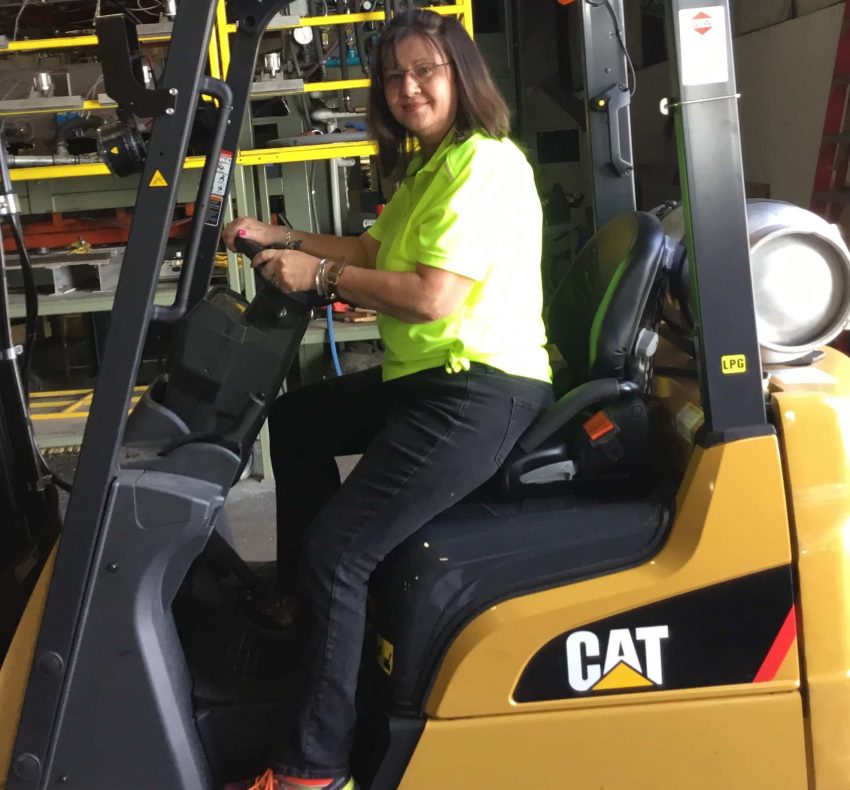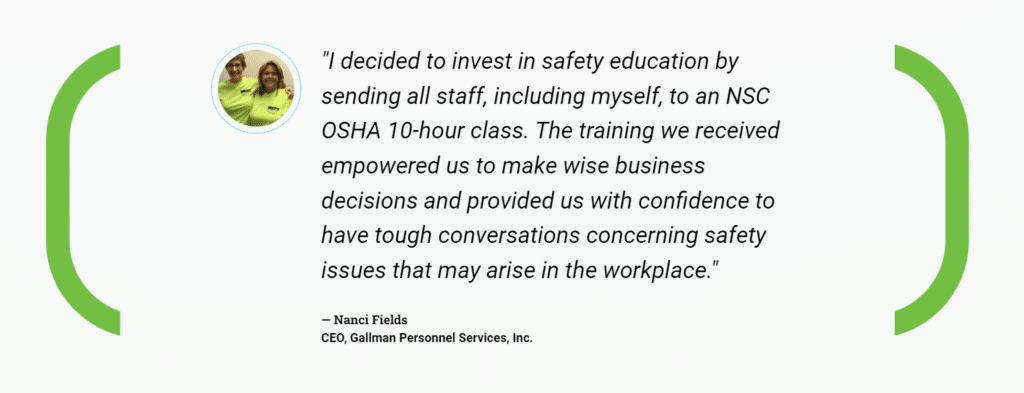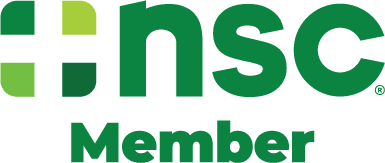Employee
Safety Resources
GPS - Where Safety is Everybody's Job...My Job...Your Job!
GPS is Committed to Safety
GPS is committed to providing a safe work environment for our employees and clients. We believe that safety is everyone’s responsibility and we take steps to ensure that our workplaces are free from hazards.
Our safety mission: Safeguarding GPS employees by sustaining a culture that promotes safety awareness.
GPS Health Safety & Environmental Compliance & Training Director, Barbara Greene, is committed to ensuring that every GPS employee returns home safely from their work day. She conducts an onsite safety tour and audit of every new client before a GPS employee is placed. This ensures GPS employees are placed in a safe environment and they will receive the same safety training as the client’s employees.
Below is an assortment of Safety Resources designed to help each GPS employee expand their knowledge of safe work practices.

Employee Safety Resources
Heat Illness
What are some ways to treat heat illness?
- Take the affected employee to a cooler area (e.g., shade or air conditioning).
- An ice bath is the best method to cool an employee rapidly in an emergency. Create the ice bath by placing all available ice into a large container with water and placing the employee into the ice bath.
- Remove outer layers of clothing, especially heavy protective clothing.
- Place ice or cold wet towels on the head, neck, trunk, armpits, and groin.
- Use fans to circulate air around the employee.
- NEVER leave an employee with heat-related illness alone. The illness can rapidly become worse.
- When in doubt, call 911.
The National Weather Service (NWS) uses a heat index (HI) to classify environmental heat into four categories:
- Caution (80°F – 90°F HI);
- Extreme Caution (91°F – 103°F HI);
- Danger (103°F – 124°F HI); and,
- Extreme Danger (126°F or higher HI).
Machine Guarding
Any machine part, function, or process which may cause injury should be guarded and not allow someone to reach over, under, around or through. Machine guards and similar devices protect against injuries which can be caused by the machine operation, such as those listed in the PDF handout below.
When working in any type of facility with moving equipment, it is important to make safety a priority. While some dangers are obvious, others are often overlooked and can result in significant injuries. One example is working near moving machinery with loose clothing. An untucked shirt, a tie, an unbuttoned jacket or even loose shoelaces, can get caught in the moving machinery and pull individuals into harm’s way.
Ergonomics-Stretching
No matter how well a workstation is designed, problems may arise if attention is not paid to the way the work
is done. Some work activities involve very few changes in body position. This lack of movement can lead to
muscle pain and strain. It is recommended that a person change positions every hour spent sitting or standing
at a workstation. Stretching exercises, examples listed below, can also help prevent muscle pain and strain.
Forklifts
Forklifts are powerful machines that can be dangerous if not operated properly. By following these safety tips, you can help prevent accidents and injuries.
Before operating a forklift:
- Only workers who are properly trained and certified should operate a forklift.
- Inspect the forklift for any damage or defects.
- Wear appropriate safety gear, including a hard hat, safety glasses, steel-toed boots, and a reflective vest.
- Be aware of your surroundings and watch for pedestrians and other vehicles.
- Never operate a forklift while under the influence of drugs or alcohol.
While operating a forklift:
- Drive slowly and carefully.
- Use your horn and lights to signal your intentions.
- Never overload the forklift.
- Keep the forks low to the ground when not in use.
- Don’t raise or lower the load while traveling.
- Be aware of your blind spots.
- Never drive with passengers.
- Never leave the forklift unattended with the engine running.
- Stay inside the forklift and keep your body close to the controls. Don’t let your legs, feet, or hands hang outside of the forklift.
After operating a forklift:
- Park the forklift in a safe location.
- Lower the forks to the ground.
- Turn off the engine and set the parking brake.
- Secure the forklift with a wheel chock.
- Report any damage or defects to your supervisor.
Hand Safety
As with all PPE, wearing the proper type of gloves is vital when it comes to protecting your hands.
Do you know which gloves to use?
How about these Nine Rules of Hand Safety?
Back Injuries
Back injuries are a major workplace safety hazard. According to the Bureau of Labor Statistics (BLS), back injuries account for one of every five workplace injuries or illnesses.
Temporary Services Insurance Ltd.
(TSIL) Safety Video
HR Hotline
GPS is committed to providing a safe workplace. If you have an HR concern to report, please call, email or select the button below.
Safety Hotline
GPS is committed to providing a safe workplace. If you have a safety concern to report, please call, email or select the button below.
Safety Policy Statement
GPS considers the safety and health of every employee to be a top consideration in conducting day-to-day business. We believe in protecting our employees as much as possible through a proactive and ongoing Safety Program which includes safety training, periodic client safety audits and a hotline to allow our employees to report safety concerns anonymously.
GPS partners with clients to ensure GPS employees are treated and respected as a client would treat and respect their employees. In addition, GPS ensures that our employees are provided with the same safety training that a client would provide to their employees.
GPS will achieve safety goals through employee training, safety awareness and employee participation.
The National Safety Council (NSC) is an organization whose mission is to eliminate the leading causes of preventable injuries and deaths. GPS is a member of the NSC and offers training classes customizable to your company’s needs.


